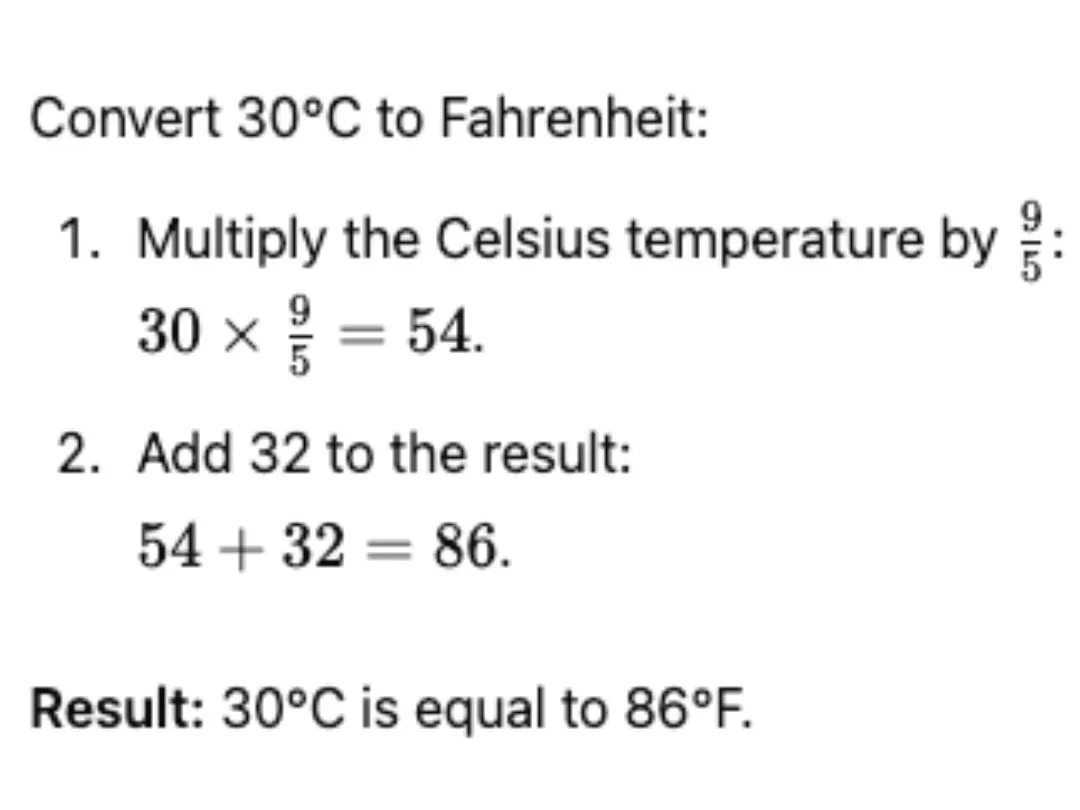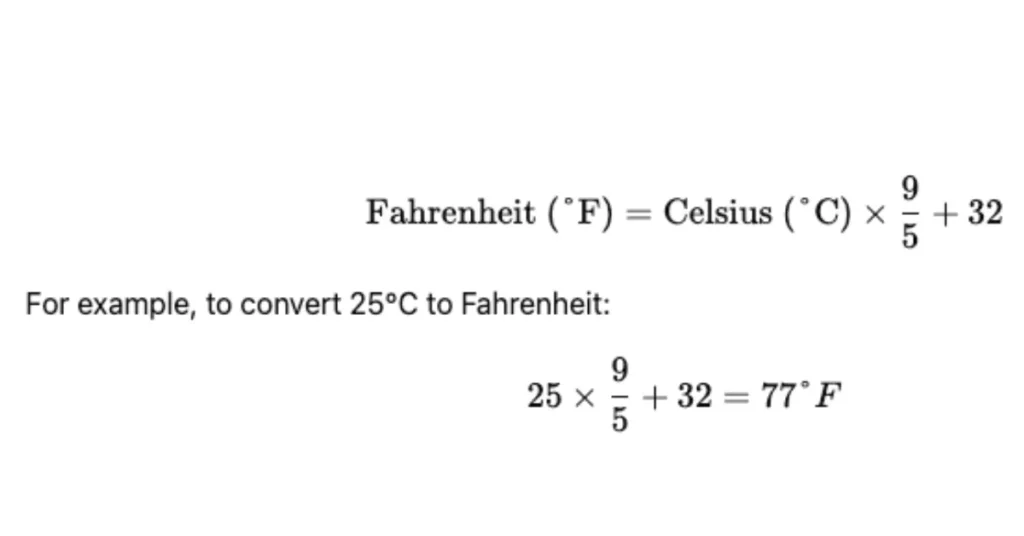Converting between Celsius and Fahrenheit might seem daunting at first, but with the right tools and understanding, it becomes a breeze. This guide not only provides a reliable converter but also explains the formula, practical examples, and applications to ensure accurate conversions every time.
Celsius to Fahrenheit Converter
Conversion History
How to Convert Celsius to Fahrenheit
The Celsius to Fahrenheit conversion is based on a simple mathematical relationship. The Fahrenheit scale is primarily used in the United States, while Celsius is standard in most of the world. Here’s how to convert between the two:
Conversion Formula:
Temperature (°F)=

Step-by-Step Example:

Result: 30°C is equal to 86°F.
Why Convert Celsius to Fahrenheit?
Understanding temperature in both Celsius and Fahrenheit is essential for many scenarios, including:
- Weather Reports: Different regions use different temperature scales, so conversions help interpret weather updates when traveling.
- Cooking and Baking: Recipes from different parts of the world often use one scale over the other.
- Education and Science: Many international studies and projects require knowledge of both scales.
Conversion Table for Quick Reference
| Celsius (°C) | Fahrenheit (°F) |
|---|---|
| -30 | -22 |
| -20 | -4 |
| -10 | 14 |
| 0 | 32 |
| 10 | 50 |
| 20 | 68 |
| 30 | 86 |
| 40 | 104 |
| 50 | 122 |
This table provides quick access to common conversions, saving you time and effort.
Historical Background
The Celsius scale, developed by Anders Celsius, is widely recognized for its logical design, where 0°C represents the freezing point of water and 100°C its boiling point. The Fahrenheit scale, created by Daniel Gabriel Fahrenheit, was designed to measure temperature more accurately in weather and scientific contexts. Understanding both scales allows for seamless navigation of global systems.
Practical Applications of Celsius to Fahrenheit Conversion
- Cooking and Recipes:
International recipes may call for oven temperatures in Celsius or Fahrenheit. Knowing how to convert ensures perfect results. - Traveling:
When traveling to countries using a different scale, being able to convert temperatures helps with packing and planning activities. - Health and Medicine:
Thermometers often display temperatures in both scales, especially in multinational health devices. - Climate Studies:
Global climate research often involves converting temperatures for comparative studies.
Commonly Asked Questions
1. Why is 0°C equal to 32°F?
This difference is due to the two scales’ starting points. Celsius begins at the freezing point of water (0°C), while Fahrenheit’s zero is based on a brine solution freezing point.
2. What’s the most accurate way to convert Celsius to Fahrenheit?
Using the formula Temperature (°F) =

3. How can I estimate conversions without a calculator?
For quick estimates:
- Double the Celsius value.
- Subtract 10% of the result.
- Add 32.
For instance, to convert 20°C:
20×2 = 40 – 4 = 36, 36 + 32 = 68°F.
4. Which scale is more precise?
Both scales are equally precise, but Celsius is more intuitive for scientific measurements due to its logical 0-100 structure.
Advanced Tip: Understanding Absolute Zero
Absolute zero, the lowest possible temperature, is -273.15°C or -459.67°F. This temperature marks the point where molecular motion ceases. Scientists often convert temperatures to the Kelvin scale, which starts at absolute zero, for precision in calculations.
Final Thoughts
Temperature conversions between Celsius and Fahrenheit are an essential skill for everyday life, whether you’re cooking, traveling, or studying. Use our converter, tables, and examples to simplify your tasks. Bookmark this page for future reference, and never worry about getting the conversion wrong!
Looking for additional converters? Try these:
- Fahrenheit to Celsius Converter